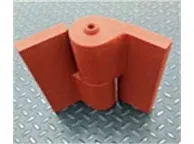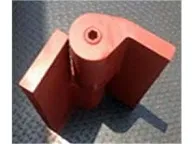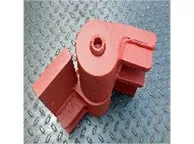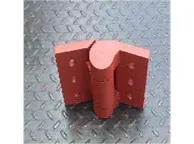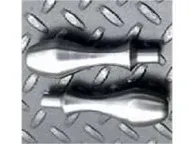Heavy-duty strap hinges play an important role in securing and supporting heavy doors or gates. These hinges are designed to endure immense weight and provide strong and durable support. Whether used in residential, commercial, or industrial settings, understanding the benefits, and installation techniques of heavy-duty strap hinges is a must. In this post, we will cover a few must know things about strap hinges.
What are Strap Hinges
Strap hinges are a specific type of hinge known for their long and narrow design, resembling a strap or band. These hinges comprise two flat metal plates that are joined together by a pivotal pin or rod, enabling the seamless rotation and movement of doors, gates, and cabinets.
Benefits of Strap Hinges
Strap hinges offer several benefits, making them a popular choice for various applications across industries. A few of the advantages of these hinges include;
- Security: Heavy-duty strap hinges are known for offering enhanced security for doors and gates. Their secure mounting and robust construction make it challenging for unauthorized individuals to tamper with or force them open. This added security feature is highly beneficial for residential, commercial, or industrial settings where safeguarding property and restricting access is of utmost necessity.
- Smooth Operation: Strap hinges that are meticulously crafted offer smooth and quiet operation, guaranteeing ease of use. They are also designed with features such as ball bearings or oil-rubbed mechanisms that minimize friction and noise. These features make them a suitable choice for applications where silent operation is desired.
- Aesthetics: Strap hinges are designed for both practical and aesthetic purposes. They are available in a range of styles, finishes, and decorative designs, contributing to enhance the overall look of the surrounding architecture or furniture. Whether you prefer a traditional or modern look, you can get a strap hinge style that aligns perfectly with your unique design requirements.
- Durability: Heavy-duty strap hinges are widely known for their outstanding strength and unparalleled durability. These hinges are typically manufactured from robust materials like stainless steel or heavy-duty iron, augmenting their ability to withstand heavy loads, adverse weather conditions, and frequent usage without compromising their structural integrity.
Installation Procedures
The following are the major steps involved in the installation of strap hinges.
- Measure and mark the desired location on the door and the door frame. It is important to consider the height at which the hinges will be placed during measurement, as this will ensue the door's ability to swing effortlessly without having any obstructions.
- Now create pilot holes at the marked locations using drill and appropriate drill bit. Here, note that the size of the drill bit should align with the diameter of the screws that came with the strap hinges.
- Next, carefully place the strap hinges onto both the door and doorframe, ensuring that the holes in the hinge plates are aligned with the pilot holes. It is important to note that the hinges are flush against the surface and level during this stage to achieve a proper installation.
- Now, it is the time to insert the screws into the pilot holes and tighten them using a screwdriver or a drill with a screwdriver bit. Ensure not to overtighten the screws to avoid damaging the hinges or door.
- Test the door by opening and closing it to check the smoothness of the hinge movement. If there is any resistance or misalignment, adjust the hinge position or screw tightness accordingly.
- Repeat the above steps for installing the remaining strap hinges, ensuring equal spacing between each hinge.
- After all the strap hinges are properly installed, test the door again to make sure their proper functionality. At this stage, you can make any necessary adjustments as required.
- After the installation, you can also apply a lubricant to the hinge pins to ensure smooth operation and prevent rust or corrosion. You can consider graphite powder for this purpose.
Tips to Choose the Right Heavy-Duty Strap Hinges for your Applications
There are several factors to consider when choosing the right hinges for your applications. Keep in mind the following factors enables you to choose the right hinge for your job.
- Weight Capacity: When selecting strap hinges, it is crucial to consider their weight capacity. Ensure that the chosen hinges have the ability to bear the weight of the door or gate they will be affixed to. It is advisable to review the manufacturer's specifications for the hinge's weight capacity and compare it to the actual weight of your door or gate.
- Material: When selecting strap hinges, one important aspect to take into account is the material used. The choice of material impacts the strength, durability, and overall visual appeal of the hinges. Steel, iron, brass, and bronze are commonly used materials for strap hinges, each offering distinct characteristics. It is crucial to carefully choose a material that aligns with your specific application requirements and desired aesthetic.
- Size and Length: Consider both the size and length of the hinge when choosing them for your application. The length should be appropriate for the weight and dimensions of the door or gate, ensuring that it offers enough support and stability. Also, the size of the hinge should go well with the overall visual appeal of your project.
- Style and Design: Strap hinges are available in a wide range of styles and designs, ranging from simple and traditional to more ornate and decorative. Consider the overall design theme of your project and choose strap hinges that matches with it. The style and design of the hinges can greatly enhance the appearance and visual appeal of your doors or gates.
- Functionality: When choosing strap hinges for your doors or gates, it is recommended to carefully consider their intended purpose. If you require hinges that allow for a complete swing motion, select strap hinges that provide ample movement capabilities. Additionally, take into account the security features, ease of installation, and maintenance requirements before finalizing.







